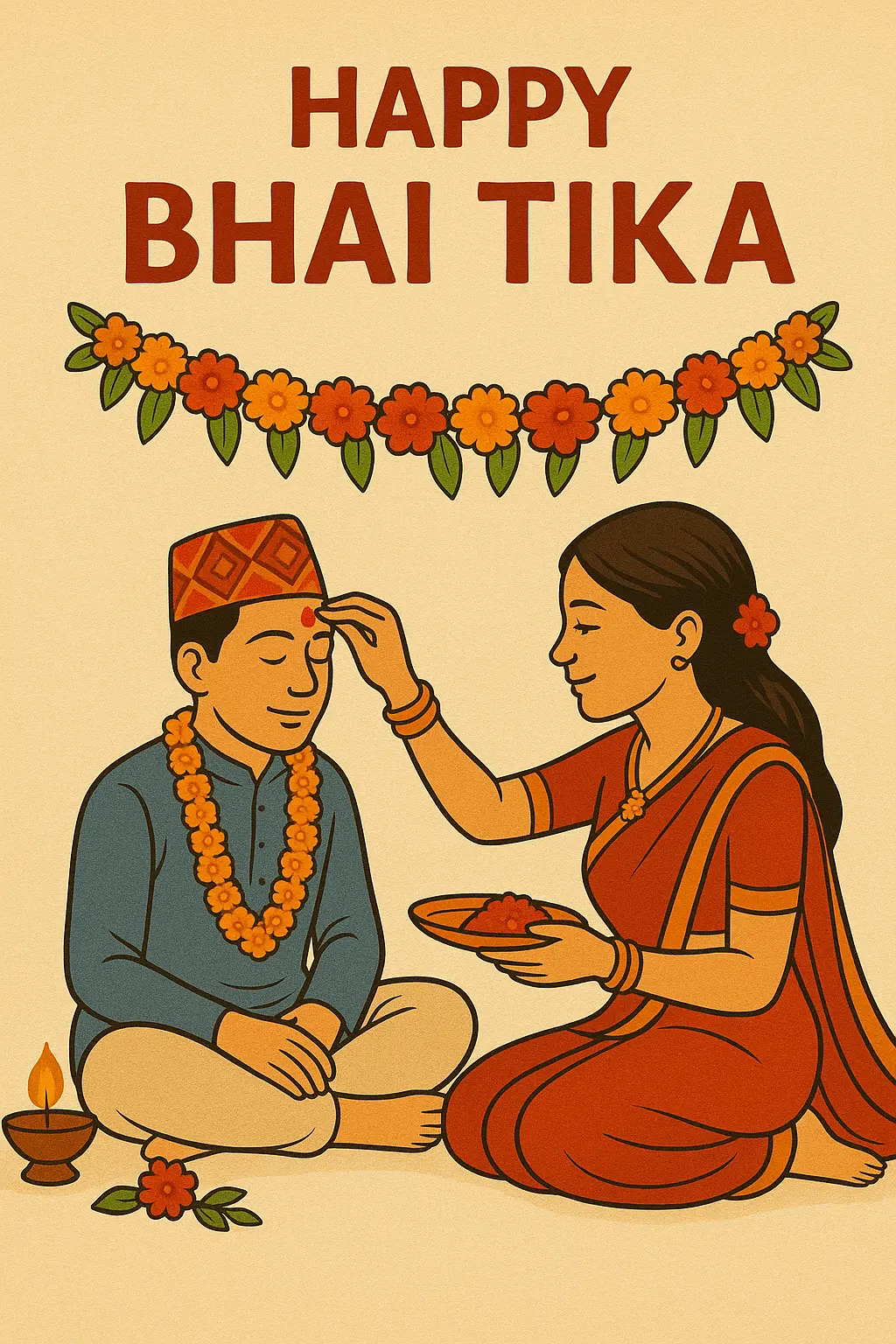Tihar Festival in Nepal
Tihar Festival in Nepal – The Festival of Lights, Love, and Blessings
Tihar, also known as Deepawali or Yamapanchak, is one of Nepal’s most cherished and colorful festivals. Celebrated for five consecutive days, it signifies the victory of light over darkness, good over evil, and the bond of love among humans, animals, and deities. The festival usually falls in October or November and is marked by oil lamps, colorful decorations, joyous music, and heartwarming family gatherings across the country.
Day 1 – Kaag Tihar (Worship of the Crow)
The first day of Tihar begins by honoring the crow, considered a messenger of death and news in Hindu tradition. People offer food, grains, and sweets to crows early in the morning, believing that feeding them prevents sorrow and misfortune. This ritual symbolizes awareness and the importance of communication in life.
Day 2 – Kukur Tihar (Worship of the Dog)
The second day is devoted to dogs, loyal companions and guardians. According to Hindu beliefs, dogs guard the gates of the afterlife and serve Yamraj, the God of Death. On this day, dogs are adorned with tika, garlands, and delicious meals as a token of love and gratitude for their loyalty, friendship, and protection. Streets across Nepal become filled with joy as people honor these faithful friends.
Day 3 – Gai Tihar and Laxmi Puja (Worship of Cow and Goddess of Wealth)
The third day is the most significant day of the festival. In the morning, people worship cows, symbolizing purity, prosperity, and motherhood. Cows are decorated with flower garlands and vermillion tika, and offered food as gratitude for their sacred contribution to human life.
In the evening, homes, temples, and streets are beautifully illuminated with oil lamps, candles, and colorful lights for Laxmi Puja, the worship of Goddess Laxmi, the goddess of wealth and fortune. Families clean and decorate their homes with rangoli designs and light lamps to invite the goddess’s blessings. The night comes alive with Deusi-Bhailo songs, where children and youths visit homes singing, dancing, and sharing blessings, spreading happiness and unity throughout communities.
Day 4 – Govardhan Puja, Goru Puja, and Mha Puja
The fourth day of Tihar varies by community and tradition. In Hindu households, it is celebrated as Govardhan Puja or Goru Puja, honoring the ox, an important animal in agriculture. People also build small Govardhan mountains from cow dung, symbolizing Lord Krishna’s victory in protecting the people of Gokul.
In the Newar community, this day is observed as Mha Puja, meaning “worship of the self.” It is a unique ritual that purifies the soul and renews one’s inner strength, health, and fortune. This day also marks the New Year of the Nepal Sambat calendar, celebrated with traditional feasts and family gatherings.
Day 5 – Bhai Tika (The Bond of Brothers and Sisters)
The final and most emotional day of Tihar is Bhai Tika, celebrating the sacred bond between brothers and sisters. The legend behind Bhai Tika comes from Yamuna and Yamraj, where Yamuna applied a seven-colored tika (Saptarangi Tika) on her brother’s forehead, prayed for his long life, and adorned him with a sayapatri flower garland. Moved by her devotion, Yamraj blessed that any brother who receives tika from his sister on this day will be protected from untimely death.
On this day, sisters prepare a colorful mandap with flowers, oil lamps, sweets, and fruits. They perform rituals with arti, apply tika on their brothers’ foreheads, and offer symbolic gifts. In return, brothers give presents or money and promise lifelong protection and care for their sisters.
Bhai Tika marks the joyful conclusion of the Tihar festival, symbolizing love, unity, and gratitude. As lights twinkle across homes and prayers fill the air, Tihar reminds everyone of harmony between humans, animals, and gods — a true reflection of Nepal’s rich cultural and spiritual essence.






